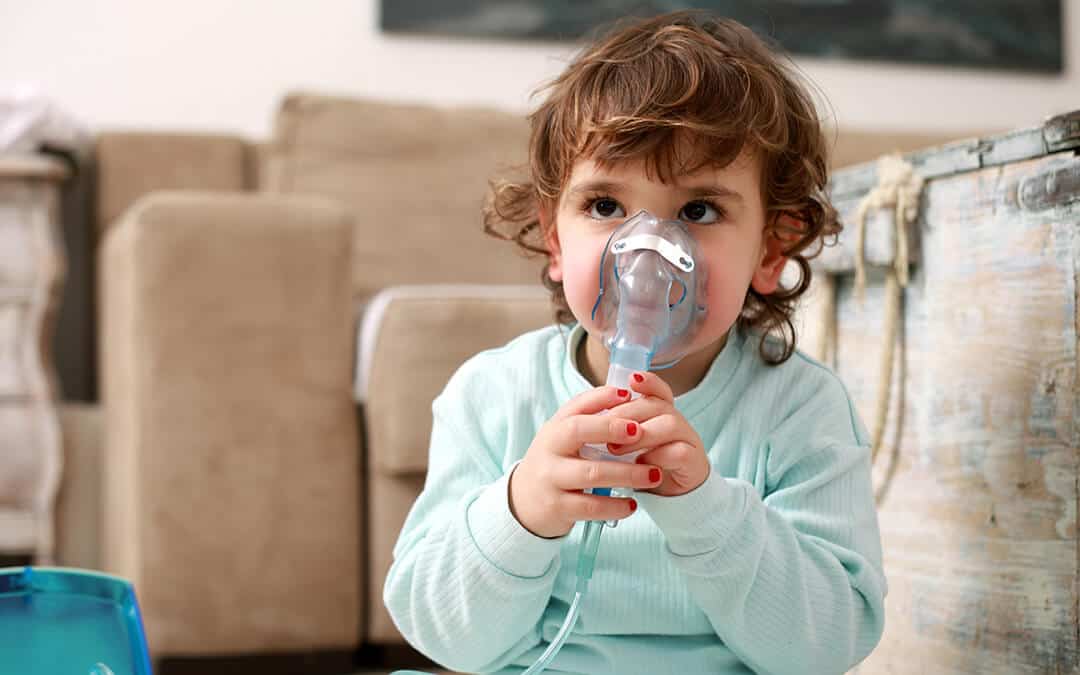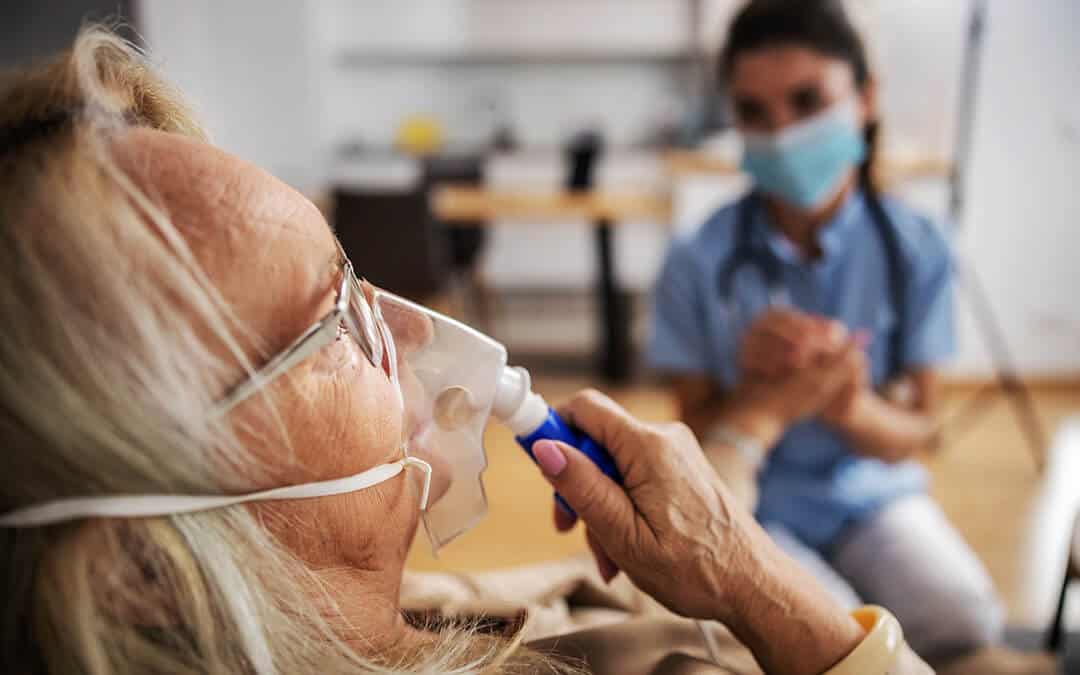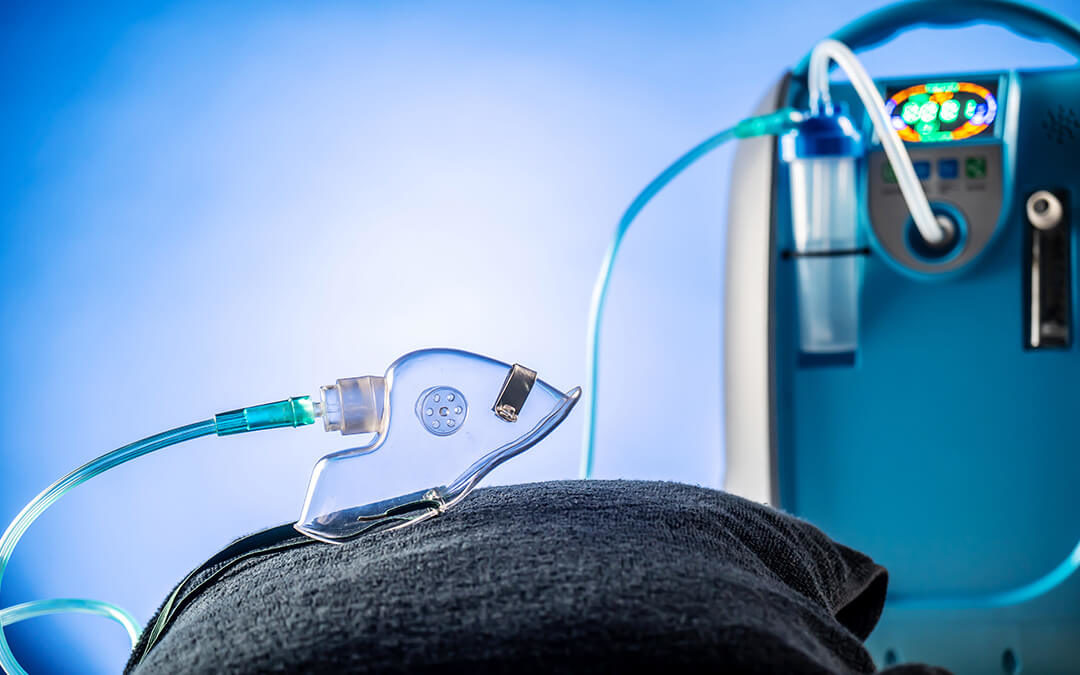In March 2020, to impede the spread of COVID-19 in the Greater Los Angeles area, Mayor Eric Garcetti issued a Safer at Home emergency order, urging LA residents to stay at home and keep outings limited to the essential. In a city as populous as LA, hospitals can become easily overwhelmed, especially during a pandemic. Compliance with Safer at Home has allowed hospitals to continue to accept new patients and provide emergency treatment to those with the most urgent needs.
Not all symptomatic COVID-19 patients need to be hospitalized in order to receive respiratory care. And not all hospitalized COVID-19 patients must remain admitted until completely recovered.

In order to keep beds free for patients with critical needs, busy hospitals may discharge COVID-19 patients from emergency rooms, rather than admitting them into already-crowded wards. Or they may discharge admitted patients sooner than normal, to make room for new arrivals. In these cases, patients can be sent home with pulse oximeters, portable oxygen units, and instructions for self-care. While recovering at home, extended use of supplemental oxygen – beyond what the hospital can provide – may be required.
Home Health Care
In April 2020, in partnership with LAC+USC Medical Center, CalOx established their own Safer at Home program – to deliver supplemental oxygen and equipment to COVID-19 patients. Since then, more than 2,000 patients have participated in the program. CalOx delivers take-home oxygen units to hospitals, to be given to patients upon discharge – and they deliver oxygen supplies to patients at home, assisting with equipment set-up, instruction for proper use, and removal of empty cylinders.
For symptomatic COVID-19 cases serious enough for a trip to the ER – often with a demonstrated need for supplemental oxygen – but not severe enough to require consistent monitoring, Safer at Home helps get patients out of the hospital and into their homes as quickly as possible.
Through the program, assigned respiratory therapists consult with patients, to ensure they feel comfortable using the oxygen on their own. At-home patients learn how to practice self-care with the provided equipment, how to monitor their own oxygen saturations, and how to identify signs that a return to the hospital may be necessary. CalOx maintains accurate data sets containing patient history, to track the recovery process and to make any adjustments to the treatment plan.
Meeting the Demand
In April 2020, CalOx was setting up supplemental oxygen services for two to four COVID-19 patients per day. By June, and through the summer, they were setting up oxygen for ten to fifteen patients per day. Another COVID-19 surge swept through Greater Los Angeles in November and December, filling hospitals to capacity. CalOx drew on long-standing industry connections to obtain enough equipment to keep up with the increasing number of patients in need of post-discharge respiratory treatment.

Safer at Home was the first program of its kind, and it received a welcome response from hospitals and patients alike. Calls came in from medical centers across Southern California, asking CalOx to offer them similar programs. CalOx continues to work with multiple facilities within the Los Angeles County Department of Health Services, including LAC+USC. Oxygen-delivery programs have started to appear in other parts of the country as well.
Bringing Oxygen Where It’s Needed
CalOx COO Steve Yaeger says that Safe at Home acts as a pressure valve for the hospitals. “Every patient that we get out of the hospital frees up a bed for a patient to get admitted from the ER – and that allows another ambulance to come in. We did everything we could to get these patients out as quickly as possible, in a safe manner, to allow them to recover at home, and keep the hospitals from not being able to accept any more patients.”
Yaeger saw the need, and CalOx met the challenge. “We knew as an organization that, if we weren’t going to do it, then who would? We are a respiratory company. We do provide oxygen. We’ve been doing it since 1936. We have the capabilities, and we have the know-how. We have the flexibility and the industriousness to tackle it.”
CalOx has seen and heard from many recovered patients, who are grateful to have been able to recover at home, and not in a hospital. CalOx is proud of the partnerships they’ve developed with hospitals to tackle the pandemic head-on. The pandemic isn’t over, but thanks to Safer at Home, LA’s hospitals are better prepared (and equipped) to deliver the right care to the patients who need it, when they need it.
